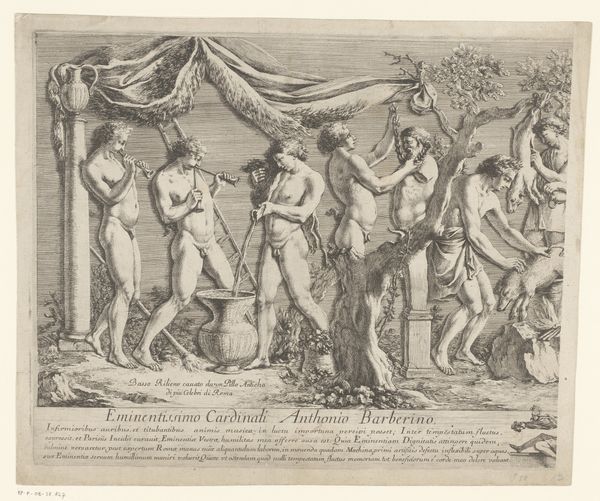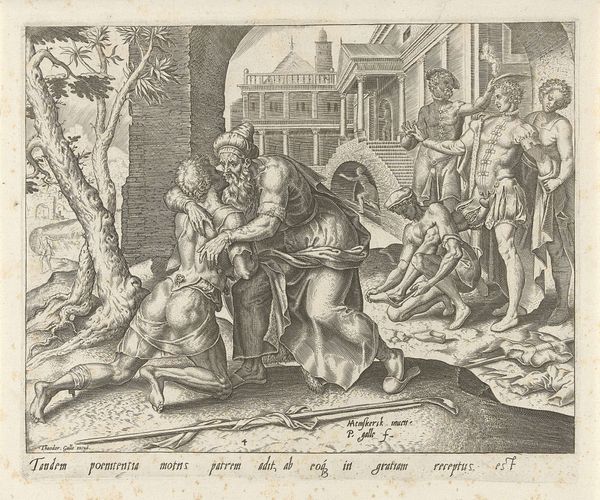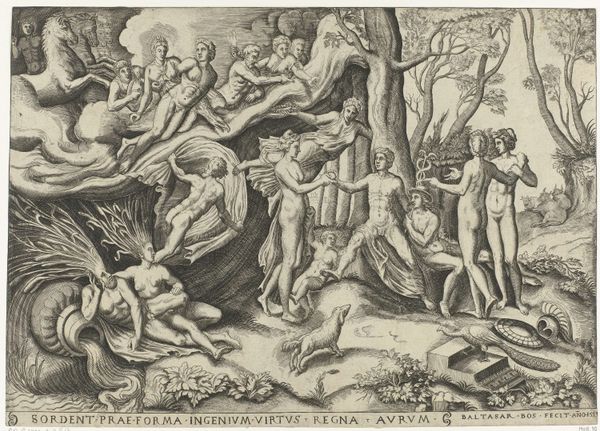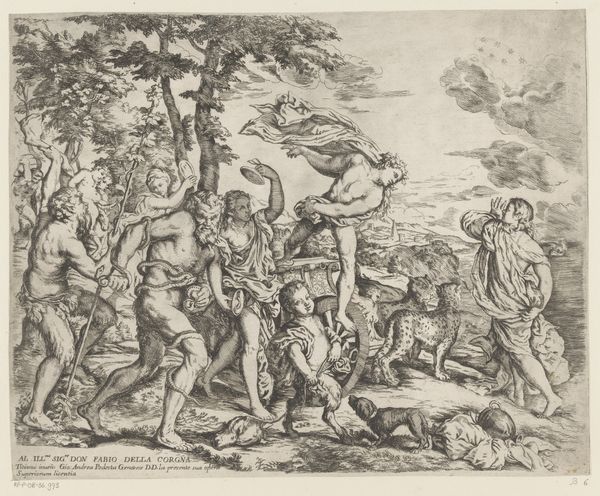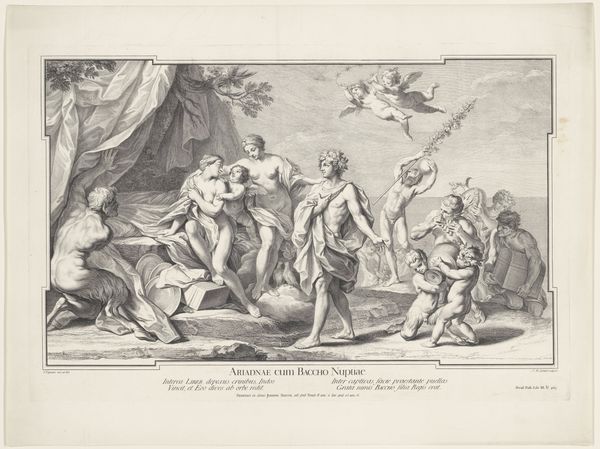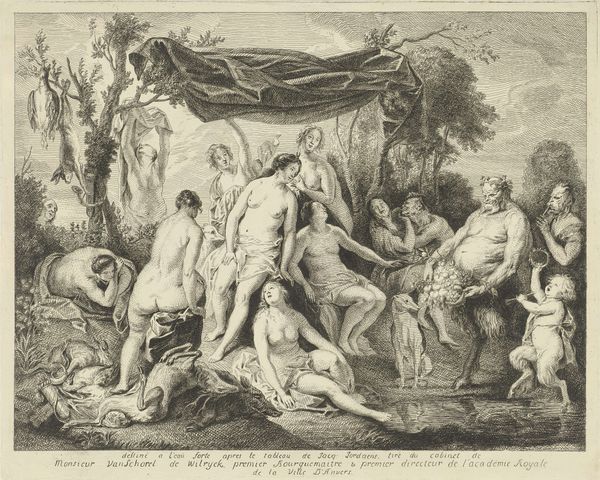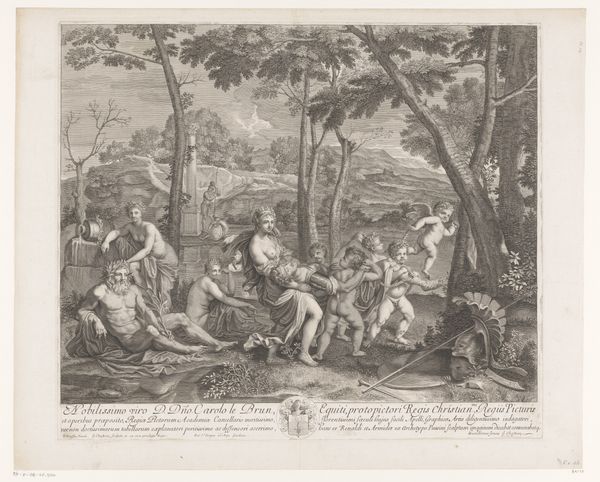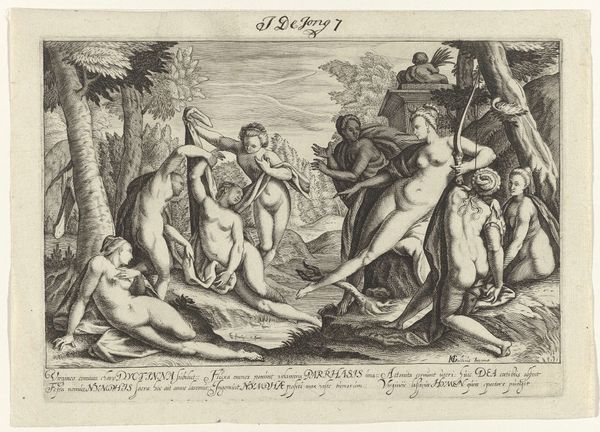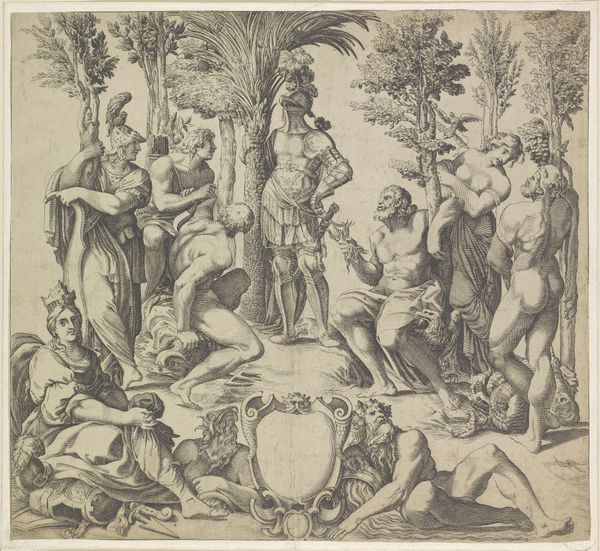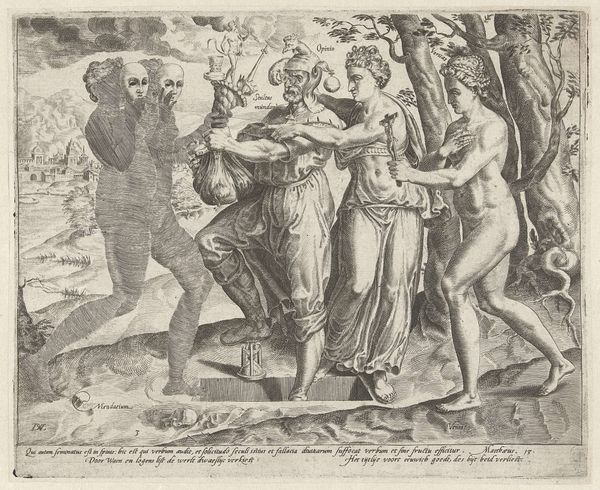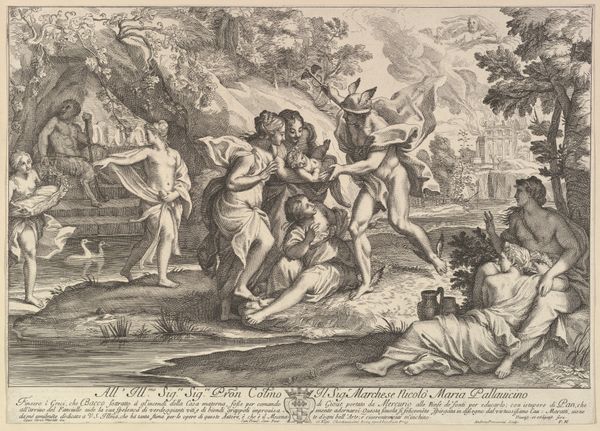
print, engraving
#
allegory
#
baroque
# print
#
figuration
#
history-painting
#
engraving
Dimensions: height 296 mm, width 343 mm
Copyright: Rijks Museum: Open Domain
This etching of frolicking Bacchantes was made in 1648 by the French printmaker Jean Lepautre. It’s a great example of how the intaglio process – cutting lines into a metal plate, inking it, and running it through a press – can create incredibly fine detail. Look closely, and you can see the burin’s mark in the crisp lines defining the figures’ musculature and the intricate foliage. Lepautre expertly uses cross-hatching to create a sense of depth and shadow, bringing the scene to life. The choice of printmaking as a medium is significant here. It allowed for the relatively quick and cheap reproduction of classical imagery, making it accessible to a wider audience. This speaks to the growing commercialization of art in the 17th century, where prints played a crucial role in disseminating visual ideas and fueling a market for decorative arts. The incredible amount of work involved is hidden behind the apparent simplicity of the finished print. So, next time you see an etching, remember to consider the labor and ingenuity that went into its making. It’s not just an image, it’s a testament to the power of craft and its role in shaping our visual world.
Comments
No comments
Be the first to comment and join the conversation on the ultimate creative platform.
